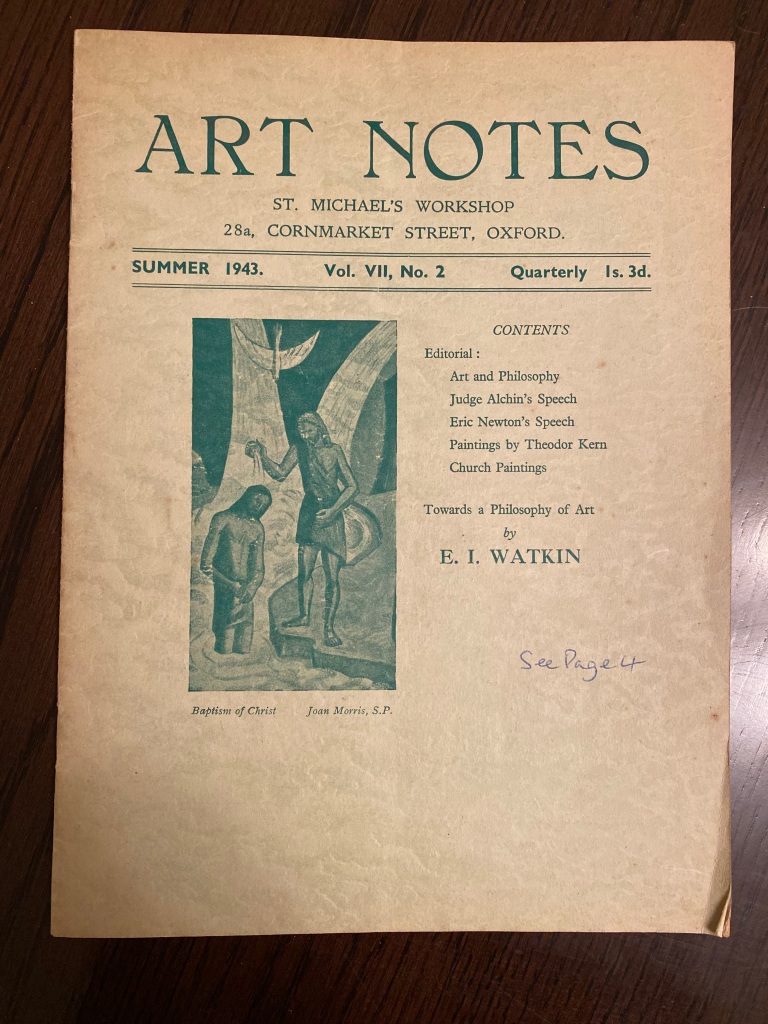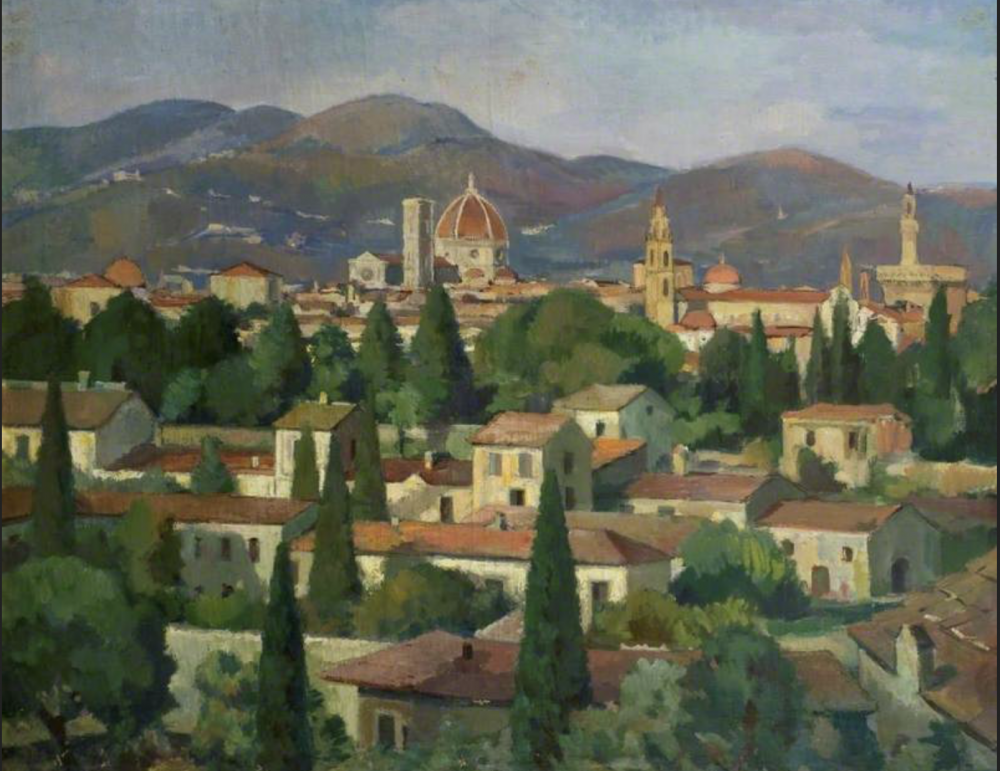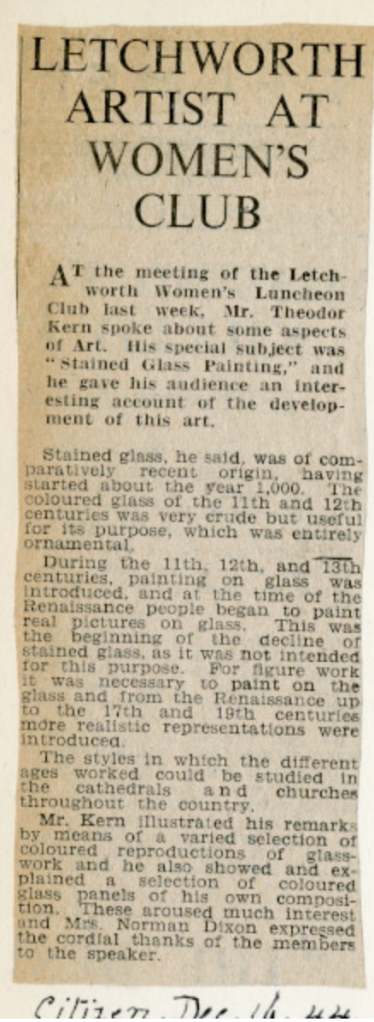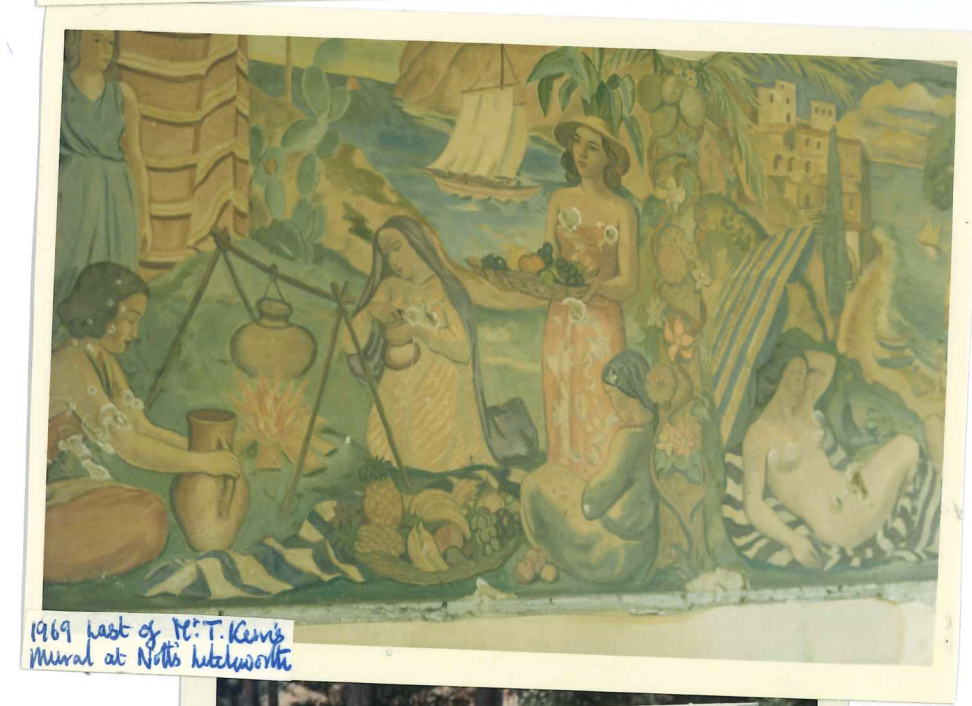The collection of Kern-related publications formerly belonging to Jean Watts, kindly shared with me by her son Gerard (see these posts), includes an edition of Art Notes from the summer of 1943. According to its front cover, the magazine was published on a quarterly basis by St. Michael’s Workshop, whose address was 28a Cornmarket Street in Oxford, just opposite the ancient church of St Michael at the North Gate. This particular issue was the second number in the seventh volume and was sold for the price of one shilling and threepence.

From the names of its ecclesiastical patrons, and from the contents of previous issues, given on the inside cover, one can deduce that this was a Catholic publication. Its editor was Joan Morris, S.P., who was herself an artist, writer and champion for women’s rights in the Church. Most of this issue is taken up with a long essay, ‘Towards a philosophy of art’, by E.I.Watkin, whose works are also listed on the inside back cover. Edmund Ingram Watkin (1888-1981) was a convert to Catholicism and a prominent pacifist and anti-fascist. He was the father of Magdalen Goffin (1925-2015, who wrote a biography of him, as well as Maria Pasqua, a life of her Italian grandmother, which I read some time ago with great pleasure.
The contents of the issue are given on the cover page of the magazine and include ‘Paintings by Theodor Kern’. There is also a handwritten note on the copy in my possession – almost certainly by the artist himself – ‘See Page 4’. At the foot of that page is a brief paragraph, also headed ‘Paintings by Theodor Kern’, reading as follows:
Theodor Kern is an Austrian and a specialist in fresco painting. He has painted many a church in his own country. Exiled here he has continued his fresco work in a church in Letchworth where he is living. He is showing some of his paintings, landscapes and portraits at St. Michael’s Workshop during May, also two stained glass pieces. His colour is rich and warm and he is at his best when he allows himself a form of expression which is free and spontaneous.
Alongside this paragraph is a monochrome reproduction entitled ‘Detail of Stained Glass Window’ which is possibly part of a window illustrating the story of the wedding at Cana and is perhaps one of the two stained glass pieces that Kern was due to exhibit in Oxford in May 1944. It would be interesting to see more details of this exhibition, but so far I’ve been unsuccessful in discovering anything further about it, or indeed about the activities of St. Michael’s Workshop.

In 1943, Kern was still living in Letchworth and had yet to move to the house in Hitchin where he would remain for the rest of his life. The church mentioned in the piece is almost certainly the Catholic parish church of St Hugh of Lincoln. As Karl Heinz Ritschel relates in his brief biography of Kern, the early 1940s found the artist working in hospitals in Hertfordshire ‘drawing and painting with wounded soldiers’, which according to Ritschel ‘was a profound experience for him, giving him an understanding of human suffering, both physical and mental’. Ritschel continues [my translation]: ‘A move to Letchworth became advisable for reasons of distance; a priest gave him a place to live, for which in turn he had to create a nativity scene.’ In time, Kern would create other works of art for the Letchworth church, including two stained glass windows and a wooden crucifix. I haven’t seen any other references to the frescoes mentioned in the article. I believe Kern’s works were created for the original church building, founded by the antiquarian and scholar Father Adrian Fortescue in 1908 and influenced both by Byzantine architecture and the Arts and Crafts Movement, which became Fortescue Hall when a new church was consecrated in 1963.







